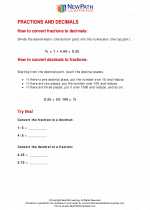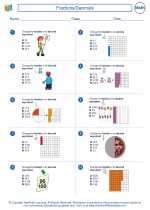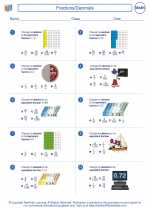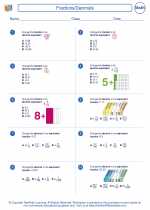Decimals
Decimals are a way of representing a part of a whole number. They are based on powers of 10, just like whole numbers, but they are used to represent numbers that are not whole. The decimal point separates the whole number part from the fractional part.
Parts of a Decimal
A decimal consists of the whole number part, the decimal point, and the fractional part. For example, in the decimal 3.25, 3 is the whole number part, the decimal point separates it from the fractional part, and 25 is the fractional part.
Converting Decimals to Fractions
Decimals can be converted to fractions. To convert a decimal to a fraction, the decimal is written over a power of 10. For example, to convert 0.75 to a fraction, we write it as 75/100 and then simplify to 3/4.
Comparing and Ordering Decimals
Decimals can be compared and ordered just like whole numbers. When comparing decimals, start at the left and compare each place value. For example, 0.75 is greater than 0.6 because 7 is greater than 6 in the tenths place.
Adding and Subtracting Decimals
When adding and subtracting decimals, align the decimal points and then add or subtract as usual. For example, to add 2.3 and 1.75, align the decimal points and then add to get 4.05.
Multiplying and Dividing Decimals
When multiplying decimals, ignore the decimal points and multiply the numbers as if they were whole numbers. The decimal point in the product will be placed so that the number of decimal places in the product is the sum of the decimal places in the factors. When dividing decimals, move the decimal point to the right in both the dividend and the divisor until the divisor is a whole number, then perform the division as usual.
Hope this study guide helps you understand decimals better!
.◂Math Worksheets and Study Guides Fifth Grade. Fractions/Decimals

 Worksheet/Answer key
Worksheet/Answer key
 Worksheet/Answer key
Worksheet/Answer key
 Worksheet/Answer key
Worksheet/Answer key
